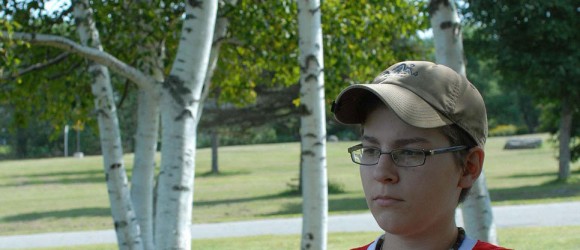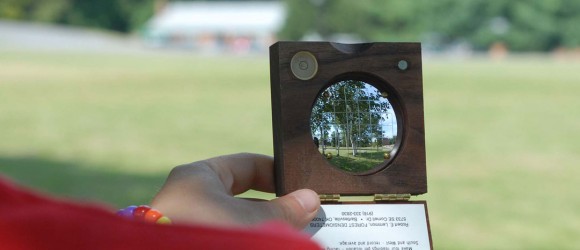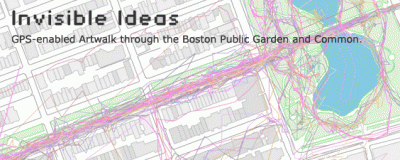Click a link below or scroll down to view all place-based projects:
Hindsight
2009
A collaboration with Doug Fox and Lisa Bunch, created for Unity College.
During the 18th and 19th centuries, artists and travelers often carried small, round convex mirrors when they went out into the landscape. These mirrors — which had blackened backs and were housed in lovely boxes — were called “Claude mirrors” or “Claude glasses” after the 17th century painter Claude Lorraine.
When these artists or appreciators of the picturesque reached a locale they found engaging (or had been told they would find engaging, for many times they were used by tourists), they’d turn their back on the vista, and gaze into the mirror to see the view. Holding the mirror at shoulder height, slightly off-center, the visitor could see what was behind him or her without being included in the reflection. Painters used the Claude glasses as drawing aids, while poets and others used them more to “manage” the view, giving an orderliness and artistic shape to the large, living world.
Claude glasses are no longer produced commercially. Ironically, the present-day object most like them is one used by foresters, a spherical densitometer. These small mirrors are also round, also convex, also housed in their own convenient carrying cases. Their main use is for estimating the density of the forest canopy; one looks down at the mirror to see more clearly the foliage far overhead.
Members of the college community are invited to check out a densitometer and a copy of the walk-map from the school library. The walk has been designed as a 21st century re-imagining of those Romantic encounters with the land. We hope to evoke and subvert the experience of using a Claude glass, to raise questions about how to look and see a place, and to provoke the kind of awareness too often experienced only in hindsight.
Click to view full image:
Invisible Ideas
2003
Invisible Ideas was a ground-breaking artwalk that combined GPS, PDAs, and Flash to enhance participants’ exploration around the Boston Common. The walkers followed a loose path and were presented with locative content during their walk created by members of the Nature and Inquiry artists group. Each participant’s path was recorded and charted on a live map (the squiggly lines in the image above) projected at the Copley Society of Art in nearby Newbury Street Boston.
Invisible Ideas was created by the Nature and Inquiry artists group: Donald Burgy, Margot Kelley, John Holland, Nita Sturiale, and Ron Wallace; in collaboration with: Bill Perry, Smart Device Macromedia Flash Development; Giuseppe Taibi, Flash/Database Integration; Matt Moore, Motion Graphics; Josh Caswell, Audio; and Ben Yates, Flash Website. Invisible Ideas was produced by Nita Sturiale.



